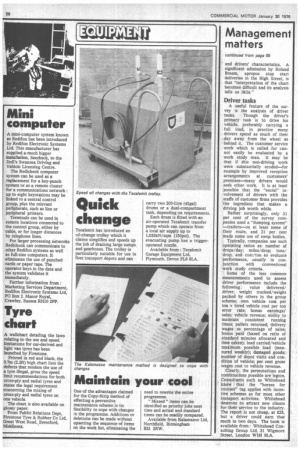Management matters
Page 62

If you've noticed an error in this article please click here to report it so we can fix it.
and drivers' characteristics. A significant admission by Roland Bream, apropos stop start deliveries in the High Street, is that "interpretation of the chart becomes difficult and its analysis tells us little."
Driver tasks
A useful feature of the survey is the analysis of driver tasks. Though the driver's primary task is to drive his vehicle, preferably carrying a full load, in practice many drivers spend as much of their day away from the wheel as behind it. The customer service work which is called for cannot easily be evaluated by a work study man. It may be that if this non-driving work were substantially eroded—for example by improved reception arrangements at customers' premises—many drivers would seek other work. It is at least possible that the "social" involvement of drivers with the staffs of customer firms provides the ingredient that makes a driving job worth while.
Rather surprisingly, only 31 per cent of the survey com panies used a "dumping system" —trailers—on at least some of their route, and 21 per cent made some use of swop bodies.
Typically, companies use such operating ratios as; number of drops/day; miles/drop; tons/ drop; and cost/ton to evaluate performance, usually in conjunction with conventional work study criteria.
Some of the less common measurements used to assess driver performance include the following: value delivered/ driver; weight trucked/weight packed by others in the group scheme; own vehicle cost per ton v hired vehicle cost per ton error rate; bonus earnings/ sales; vehicle revenue; ability to maintain consistent running times; pallets returned; delivery wages as percentage of sales; bonus paid (based on ratio of standard minutes allocated and time taken); load carried/vehicle maximum possible load (mea sured weekly); damaged goods; number of depot visits and condition of vehicle; per cent gross wages cost to vehicle revenue.
Clearly, the permutations and combinations possible are legion.
Consultants such as Whitehead know that the "horses for courses" tag applies with incen tive schemes as for most other transport activities. Whitehead deserves to attract new clients for their service to the industry.
The report is not cheap, at £23, but a driver could earn that much in two days. The book is available from: Whitehead Consulting Group Ltd, 21 Wigmore Street, London W1H 9LA.
































































































